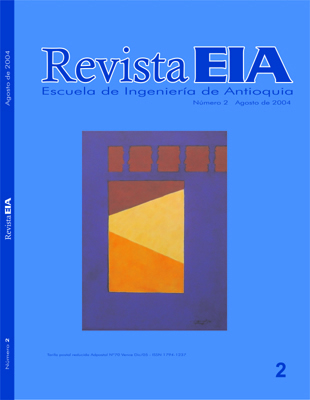SINTERIZACIÓN CERÁMICA POR ELEMENTOS FINITOS
SINTERIZACIÓN CERÁMICA POR ELEMENTOS FINITOS


This work is licensed under a Creative Commons Attribution-NonCommercial-NoDerivatives 4.0 International License.
Copyright statement
The authors exclusively assign to the Universidad EIA, with the power to assign to third parties, all the exploitation rights that derive from the works that are accepted for publication in the Revista EIA, as well as in any product derived from it and, in in particular, those of reproduction, distribution, public communication (including interactive making available) and transformation (including adaptation, modification and, where appropriate, translation), for all types of exploitation (by way of example and not limitation : in paper, electronic, online, computer or audiovisual format, as well as in any other format, even for promotional or advertising purposes and / or for the production of derivative products), for a worldwide territorial scope and for the entire duration of the rights provided for in the current published text of the Intellectual Property Law. This assignment will be made by the authors without the right to any type of remuneration or compensation.
Consequently, the author may not publish or disseminate the works that are selected for publication in the Revista EIA, neither totally nor partially, nor authorize their publication to third parties, without the prior express authorization, requested and granted in writing, from the Univeridad EIA.
Show authors biography
Este artículo describe y establece la eficacia de utilizar el análisis de elementos finitos (discretización)para predecir los cambios de forma de un plato cerámico formado mediante la tecnología de prensa doisostático (Prensa Sacmi PHO-600) durante el proceso de sinterización. El modelo desarrollado se basa en elprincipio de conservación de la masa y no incluye las deformaciones mecánicas del material. Para su implantación se requiere: i) la descripción de la malla de elementos finitos del cuerpo crudo prensado, ii) la densidaddel plato compactado antes y después del proceso de sinterización. Las predicciones numéricas obtenidas secomparan con los resultados reales del proceso de cocción, mediante el contraste entre los diámetros yalturas de la pieza y el coeficiente de contracción. Los resultados muestran una diferencia de 0,52% en diámetro y 0,48% en altura entre el valor numérico y el valor real; y una diferencia de contracción de 3,49%. Ésta esuna muy buena predicción en términos prácticos.
Abstract: This paper describes and demonstrates the effectiveness of a finite-element procedure to predict the compactation of a green ceramic isostatics pressed plate during sintering process. The approach is based onthe conservation of mass principle and requires for its implementation: i) description of the finite element meshes of the green plate when ejected from the press, and ii) the density of the plate after compactation and sintering process. Numerical compactation predictions have been compared with experimental data. The comparisons reveal that the quantitative predictions regarding diameter and height range correlate closely with the measured values showing a difference of 0.52% in diameter and 0.48% in height and a variation onshrinkage of 3.49%. We consider this to be in good agreement, for most practical purposes.
Article visits 235 | PDF visits 166
